Hi Aquatic Sentinels!🐬
Once again, I bring you content that I consider to be of quality, this takes several hours of reading, comprehension and writing.💡📚
But more than that, this is one more publication so that together we can appreciate and contemplate how wonderful our ocean is!
🦈🦀🐢🐳🐙 I hope you enjoy it!🐟🦈🦀🐢🐳
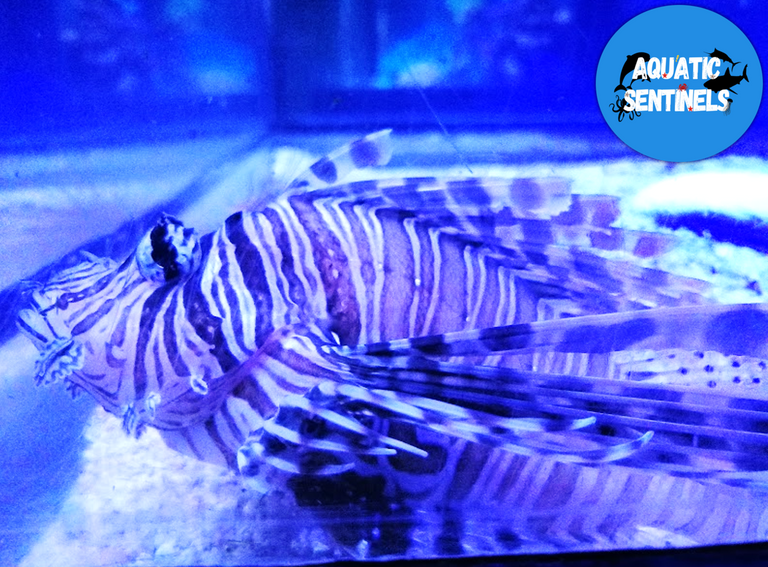
Photo by Juan Bacab G.📸
📍Aquarium of Cancún, México
A few days ago, I spoke very briefly that we have a big problem with the Lionfish in the Caribbean regions, here you can read the post👉 https://peakd.com/hive-154473/@juanbg/aquariums-places-to-learn-and-preserve-our-marine-species
Even so, despite its beauty, the lionfish is exhibited in the Cancun Aquarium, the specimens are really beautiful.
Lionfish are considered an invader in the waters of the Caribbean Sea, and it actually seems that they feel very comfortable here, without predators and feeding on whatever species they want, is there any way to deal with this situation? we'll talk about it next...
👉Join us until the end of this post to find out all the details👈...
The following information is taken from: Emanuel Enciso Camacho (2018)."En busca de una fórmula para contener al peligroso pez león". Universidad de Bogotá Jorge Tadeo Lozano, Bogotá, D.C., Colombia. [email protected]. Adapted by @juanbg

Lionfish and the Colombian Caribbean
One of the most striking characteristics of the lionfish is its beauty, it has long fins and long and white stripes that pass all over its body, many compare it with the beauty of the peacock because it opens and closes its beautiful fins as do the wings of those birds. It can reach up to 30 cm long and is a fish that looks very beautiful in aquariums.
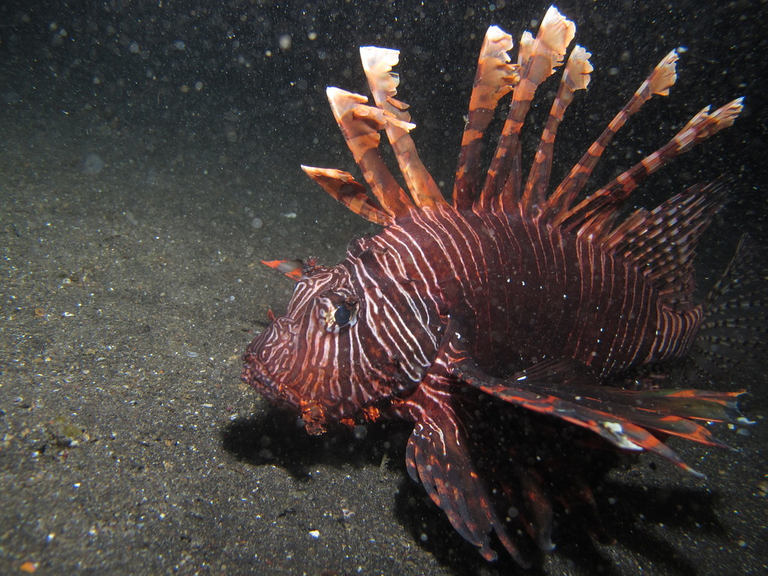
Photo by Tim Wilms📸
📍Bitung, Noord-Celebes, Indonesië
However, since 2008 it has become a real nightmare for fishermen, environmentalists and biologists in the Colombian Caribbean, a place where this invasive fish has proliferated, to the point that in 2010 the Ministry of the Environment declared it an invasive species. in Colombia and designed the Plan for the Management and Control of Lionfish in the Caribbean.
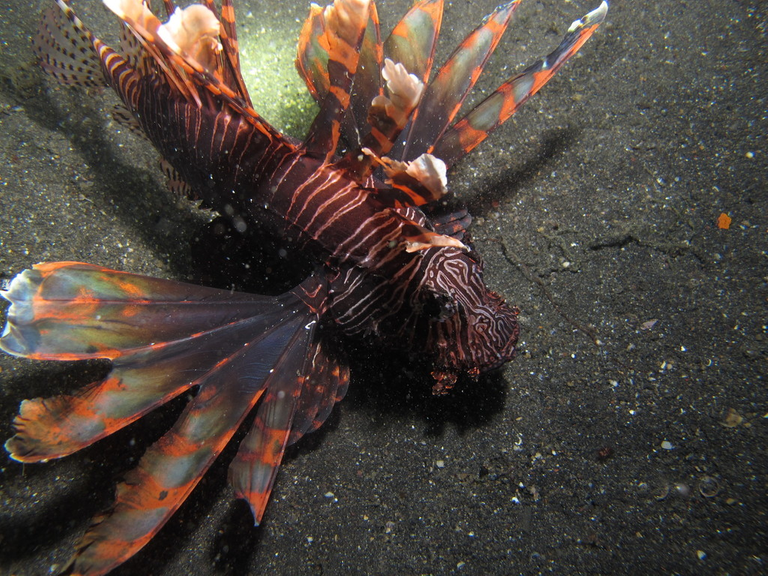
Photo by Tim Wilms📸
📍Bitung, Noord-Celebes, Indonesië

Beautiful but dangerous
The lionfish is native to the Indo-Pacific, but it brings great consequences to the Caribbean Sea...
The research findings developed by Utadeo, in association with the National University, estimate that about 365 tons of fish, some of them for commercial use, were consumed by lionfish in 2013 in San Andrés!
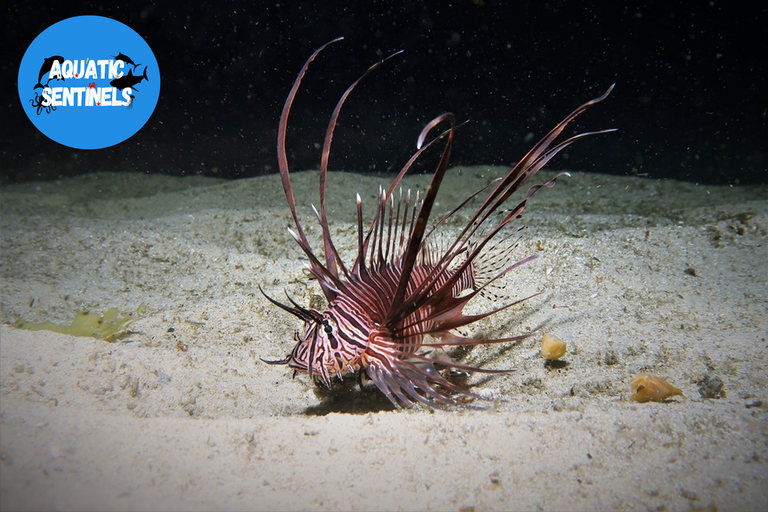
Photo by Sarah Sidney📸
📍New South Wales, AU
This generated economic losses for fishermen and an ecosystem imbalance, as native species must enter to compete for their food. This fish has no natural predator here, we might think that perhaps sharks could be its predators, but they do not recognize it as such, in addition, its spines are poisonous for consumption.

High adaptability
One of the most worrying aspects, in addition to those we have already discussed, is its ability to adapt to different environments including mangroves, corals, coral reefs, rocky and sandy systems, and also at different depths, which is why it is found in waters from zero to 600 meters.

Photo by Lily Haines📸
📍North Atlantic Ocean
Given this, the Colombian Caribbean has been one of the first to undertake the task of combating this problem. Professor and marine biologist Adolfo Sanjuán Muñoz, who recalls that in 2009 he made his first sighting of lionfish, and since then it has been very common to observe it.

In Colombia, this problem is fought with science🔬
Fight the lionfish with science? yes, although it seems ironic, the research work will always give us light at the end of the road. This is the case of Master's degree research projects in Marine Sciences, where the reproductive aspects of the lionfish are studied...
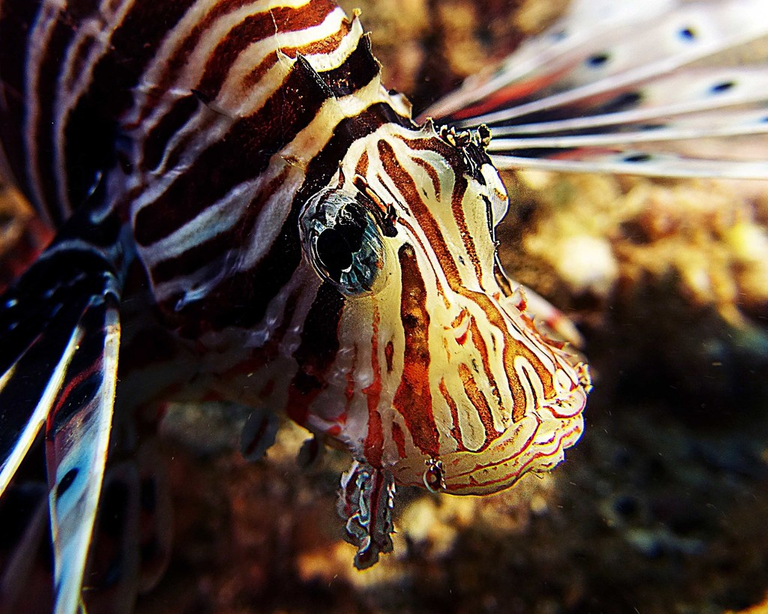
Photo by Glen Whisson📸
📍Exmouth, WA, Australia
This type of research helps to control the lionfish population, because knowing the way in which these fish reproduce, control plans could be designed within the ecosystem. The researcher considers that a good strategy would be not to hunt it all the time, but in specific periods of reproduction. She also urged constant monitoring of this type, given the penetration potential of the invasive fish.
Another researcher considers the issue of the energy reserve of these animals: In this sense, a good control strategy would be to capture the smallest specimens, in order to prevent them from reaching their reproductive cycle.
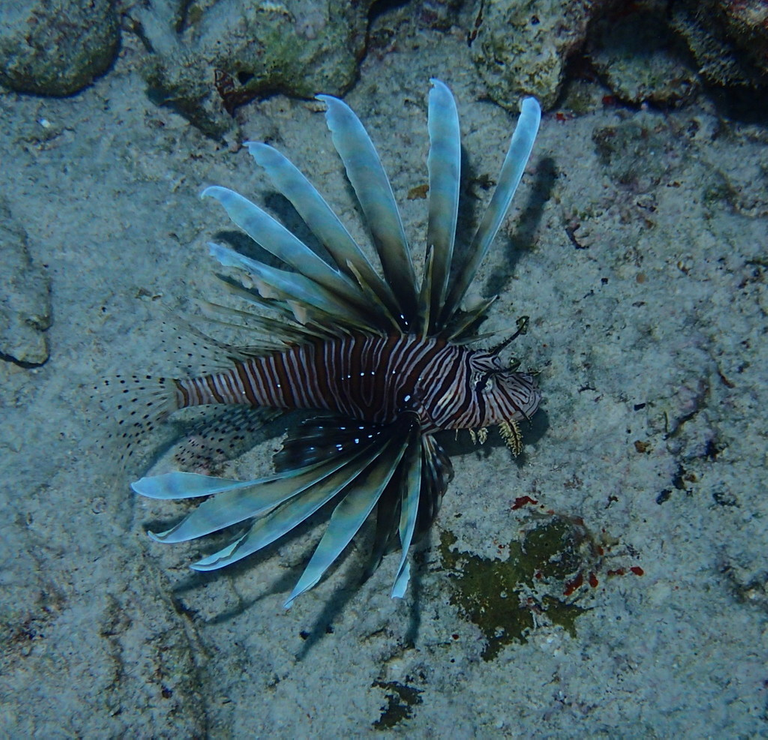
Photo by Thiebaud📸
📍Barracuda Shoals, Bahamas
The truth is that we are still very far from finding an ideal control strategy, in Mexico it is also very common to see them in the Caribbean, but the more investigations are carried out in this regard, the closer we will be to controlling a problem that we ourselves cause.⚠️

👉Join the Aquatic Sentinels!🐋
This project is dedicated to the preservation of our sea, our rivers and lakes, our lagoons. Let's make it possible! Let's share scientific and quality information for the good of our aquatic world!

🐟🐋Welcome!🐬🐙

DNA - Densifying Nature-Appreciation :

DNA is an organization to foster and DENSIFY NATURE-APPRECIATION which aims to establish REPORTS OF BIODIVERSITY DATA that is contributed by all of us Hiveans and subsequently cataloged.

DNA animation GIF by @Suheri
Therefore DNA searches for HIGH-QUALITY posts that aim to DESCRIBE and determine the BIODIVERSITY AROUND YOU with added EXPLANATIONS and INFORMATION. For these informative posts they offer a CURATION SERVICE using the @dna.org account. It is also a CURATION TRAIL. Just add the #dna TAG if you think that any of your posts is what they are looking for.

Aquatic Sentinels animation GIF by @juanbg

@juanbg: Leader of the Aquatic Sentinels Community
Conteny os good brother @juanbg
Thanks @lingkar-photo, always trying my best
Congratulations @juanbg! You have completed the following achievement on the Hive blockchain and have been rewarded with new badge(s):
Your next target is to reach 400 comments.
You can view your badges on your board and compare yourself to others in the Ranking
If you no longer want to receive notifications, reply to this comment with the word
STOPCheck out the last post from @hivebuzz:
Unfortunately, lionfish are a pest in the ecosystems of the Caribbean Sea. In Venezuela this problem also exists, and although there have been initiatives to eradicate them, these are not enough, they continue to spread and depredate our seas. It is unfortunate how an exospecies can devastate a natural environment. Very good information, greetings.
Gracias @sirenahippie! Exacto, aunque no podemos culpar a la especie, el pez león simplemente está llevando a cabo sus funciones como depredador, nosotros los seres humanos llevamos a la especie al lugar incorrecto, gracias por el apoyo!😁🐬🎉